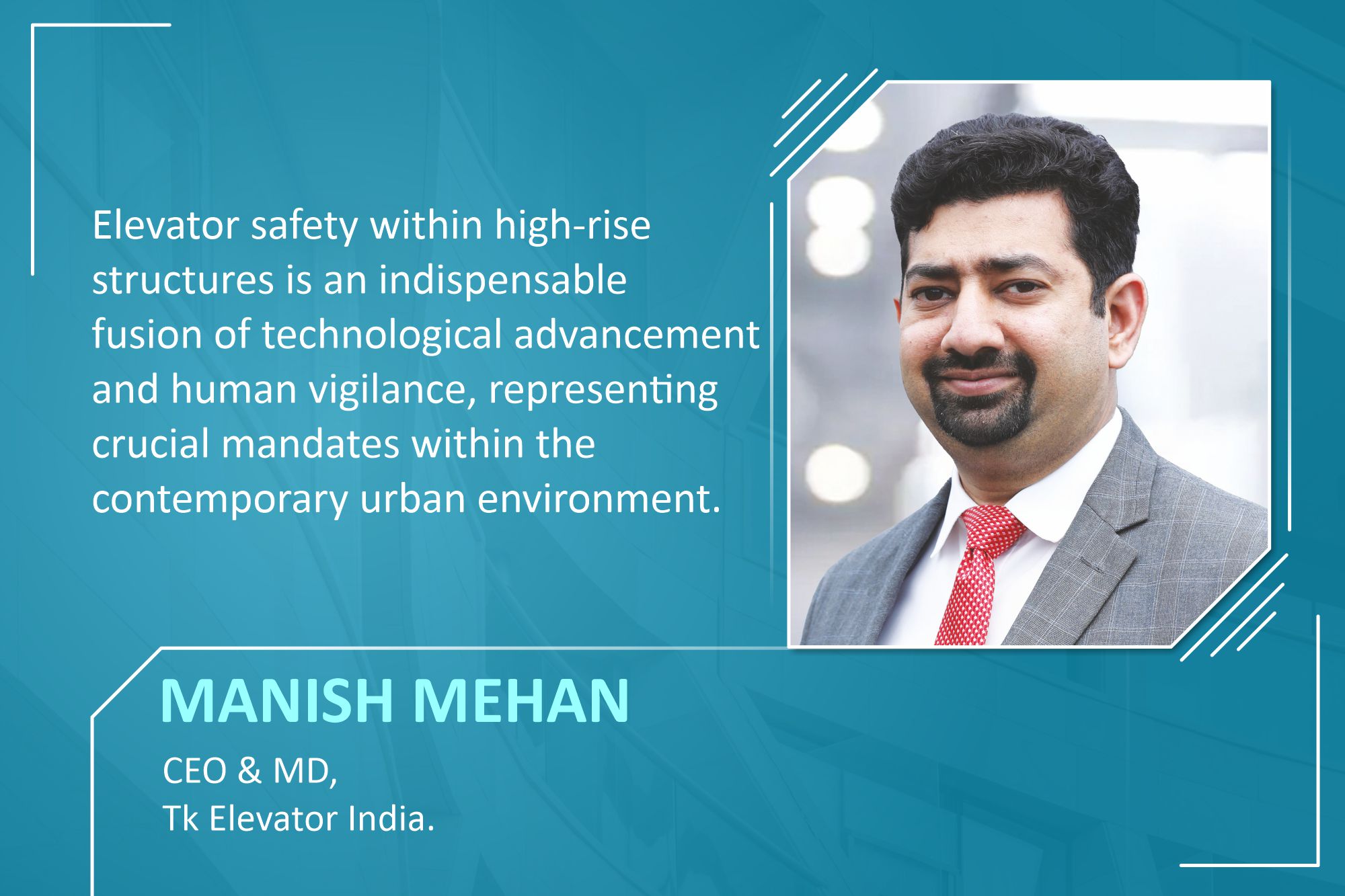Elevator Safety in High-Rise Buildings

Elevator safety within high-rise structures is an indispensable fusion of technological advancement and human vigilance, representing crucial mandates within the contemporary urban environment.
Elevator safety is not just a matter of convenience; it is a matter of life and security. Those who rely on elevators depend on their swift and efficient operation to transport them to their desired floors. The challenge of evacuating occupants during emergencies in tall buildings underscores the importance of upholding safety standards. Elevator safety is paramount to safeguard passengers and also optimise transportation within skyscrapers. Reliable technology and speedy performance will reduce travel time and enhance passenger comfort. According to the most recent estimate from Cognitive Market Research, the high-rise elevator industry’s substantial growth, projected to reach $42.89 billion by 2029, underlines the growing demand for advanced elevator technologies that ensure both efficient transportation and safety of their users, with a forecasted compound annual growth rate of 3.35 percent from 2023 to 2030, highlighting the enduring significance of this sector in our evolving urban world.
Efficiency and security of elevators in tall buildings
Elevators in skyscrapers are essential for daily living since they make it easier to get to homes and places of business. Their efficiency is maximised by combining technological developments with building inhabitants’ attention to detail, especially in high-stress conditions. Elevator function in skyscrapers goes beyond simple convenience to serving as a crucial foundation for everyone’s safety and well-being. Innovative elevator solutions like TWIN effectively double the capacity and better use the available space by fitting two independent cabins into a single shaft. Moreover, TWIN uses artificial intelligence (AI) for smart traffic management, essential in emergencies. This AI-driven system can intelligently and quickly prioritise building occupants’ evacuation, ensuring they arrive safely without needless delays. This innovation is important in towering buildings when speed and effectiveness are crucial during evacuation. On the other hand, the lift system uses the Internet of Things (IoT) to check its performance continuously. Real-time data collection from IoT sensors enables the system to identify and report operational issues quickly. This ongoing observation is particularly beneficial in difficult circumstances when it helps ensure safe and reliable transit.
While technologies such as AI and IoT greatly aid elevator safety and effectiveness, it is important to note that the performance of these systems depends not just on their technological prowess but also on the cooperation of the building occupants. Equally crucial is an understanding of safety standards and fast reporting of faults encountered. The core of elevator safety is thus a symbiosis of technology and human responsibility.

Inspections and maintenance schedules
The maintenance of elevators emphasises the importance of conducting thorough inspections and routine maintenance to ensure resident safety and guarantee effective elevator systems. Building management and elevator technicians can considerably increase the lifespan of these systems by following the advised maintenance schedules, lowering the likelihood of unanticipated failures and disturbances. Routine inspections are equally crucial because they serve as vigilant watchdogs, spotting and fixing problems before they become severe safety hazards. All structures, not just tall ones, are subject to the same requirements for elevator safety. Regular maintenance and inspections are essential for elevator systems to remain reliable and safe and to continue acting as a dependable lifeline.
Plans for emergencies and protocols for communication
A detailed emergency preparedness plan is not just a suggestion when living in a high-rise building. Still, it is an essential requirement to ensure elevator safety. Elevators, frequently valued for their comfort in vertical transportation, play a bigger role in emergencies. Swift evacuations from towering structures provide significant difficulties, necessitating careful emergency planning. Residents must work closely with the building administration and follow strict safety procedures, such as not utilising elevators in the event of a fire. Communication is equally important in emergencies since timely information can distinguish between order and chaos. Elevator systems are guaranteed to play a crucial role in the safety net, thanks to the emergency protocols that have been painstakingly developed. Elevators can be set up to automatically move to specified safe floors in response to fire alarms, facilitating quick evacuations. Elevators, thus, are essential components of safety in tall buildings due to the integration of elevator systems with fire safety measures, providing occupants with peace of mind in the face of unforeseen obstacles.
While high-rise living symbolises urban aspirations, it has specific challenges. Adherence to inspection schedules and regular maintenance of elevator systems are crucial. High-rise elevator safety lies in thorough emergency preparedness and proper communication procedures.
For more details, visit: https://www.tkelevator.com/in-en/
Cookie Consent
We use cookies to personalize your experience. By continuing to visit this website you agree to our Terms & Conditions, Privacy Policy and Cookie Policy.










